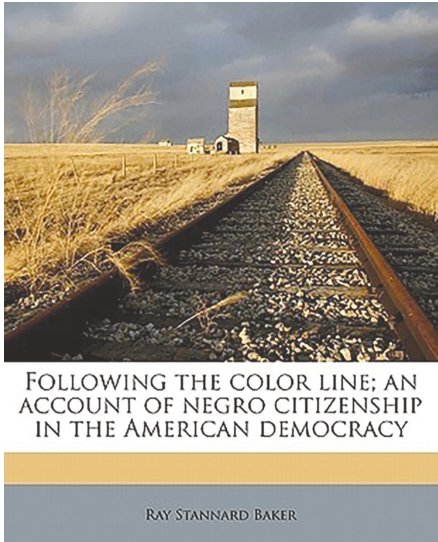 MSU's literary legendsA collection of notable Spartan authors
MSU's literary legendsA collection of notable Spartan authors If even a handful of students on the MSU campus could tell you who Ray Stannard Baker was, I would be surprised. Some may take a stab that the Baker Woodlot was named for him. I couldn’t fault them for being wrong.
Baker attended MSU in 1889, when it was still known as State Agricultural College — abbreviated as MAC. He is one of those figures lost to history even though in the late 19th and early 20th century, he was a renowned muckraker.
While at school, he was just getting started in a career throughout which he would write hundreds of essays, a couple of dozen books and eventually win the 1940 Pulitzer Prize for two books about Woodrow Wilson. He would go on to work with McClure’s Magazine for nearly a decade and then co-found the American Magazine with other muckrakers, Ida Tarbell and Lincoln Steffins.
No topic was off limits for Baker. In fact, he might have been the first author to write about early 1900s race relations with his book “Following the Color Line: An Account of Negro Citizenship in the American Democracy.”
Occasionally, the MSU alum would write under the pseudonym of David Grayson. Using that name, he’d also be one of the first authors to write about rural living. Books he wrote in that genre include “Adventures in Contentment” and “Under My Elm.” When he wasn’t writing about national issues or under Grayson’s name, he found time to write short fiction for children, like the “Boys Second Book of Inventions.” His prolific writing would eventually make him the namesake of MSU’s Baker Hall.
He and his spouse, the former Jessie Beal, also wrote a biography of her father William James Beal, who was an MAC professor of botany. MSU’s Beal Gardens is named for him.
Although born in Lansing and a fervent supporter of MAC, Baker lived his life out in Amherst, Massachusetts. Oddly, on the campus of the University of Massachusetts a dormitory is named after his pseudonym.
After his death, the Baker family donated 60 volumes on beekeeping — one of Baker’s many passions — to the MSU Library, where they reside today.
But Baker is just one of a long list of authors who either graduated or taught at Michigan State University including the 1960s triumvirate of Jim Harrison, Thomas McGuane and Richard Ford, who between them wrote more than 100 books.
In 2006, the three of them took the stage at Passant Theatre to talk about life and writing. In literary circles the event is still talked about today. Two of the three of Jim Harrison’s vodka shooters — which he drank during the event — are in University archives, while the third resides in a private library.
Harrison was noted for his poetry and deeply layered writing but was not above writing about a wild and crazy man with strong ideals called Brown Dog. He also showed in his book “Dalva” he could write in a woman’s voice.
McGuane not only wrote 10 novels, one, “92 In the Shade,” being made into a movie, but he became a master of the short story and a frequent contributor to The New Yorker.
Ford is the ultimate craftsman, often taking years to research and write a book. It seems to have paid off, having won the Pulitzer Prize for literature in 1995 for his book “Independence Day.” Ford’s four books following the fictional Frank Bascombe are considered American classics.
Other — more obscure, though still impactful — MSU writers are Glendon Swarthout, Russell Kirk and Theodore Weesner. Swarthout was not only an MSU graduate, he also wrote the breakthrough novel “Where the Boys Are” in 1960 while on campus. The work was turned into a movie of the same name and students can thank him, because it is said to have kick-started both spring break and, to a lesser degree, student activism.
“Independence Day.” Ford’s four books following the fictional Frank Bascombe are considered American classics.
Other — more obscure, though still impactful — MSU writers are Glendon Swarthout, Russell Kirk and Theodore Weesner. Swarthout was not only an MSU graduate, he also wrote the breakthrough novel “Where the Boys Are” in 1960 while on campus. The work was turned into a movie of the same name and Swarthout took his talent to Arizona and became a noted Western writer. He wrote 15 novels, seven of which were made into movies, including the “Shootist,” starring John Wayne.
Unlike Swarthout, Kirk was neither prolific nor popular, but he did pen one of the most important books of the 20th century, “The Conservative Mind.” He also wrote three novels and 22 short stories, most of which could be classified as ghost stories. He also taught for a time at MSU before becoming disenchanted with University’s size, focus on athletics and training for professions.
He would later call the school a “cow college.”
Lastly, Weesner is a special case. Often called a “forgotten writer” after he became a quiet professor in Portsmouth, Maine, but in 1972 with the publication of his book “The Car Thief,” Weesner was expected to become the next Norman Mailer. He also wrote the 1987 book “True Detective,” which tells the story of a child abduction.
Support City Pulse - Donate Today!
Comments
No comments on this item Please log in to comment by clicking here